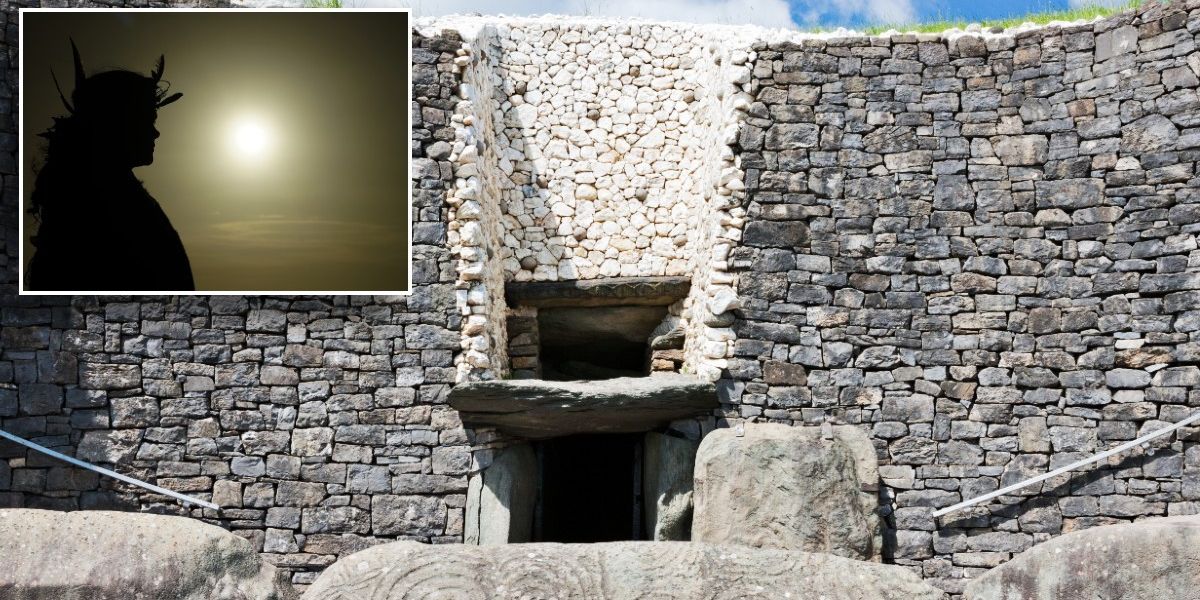The winter solstice will mark the shortest day of the year this Saturday, 21 December, with Londoners experiencing just seven hours and 49 minutes of daylight.
The annual celestial event, also known as Yule, celebrates light and the symbolic rebirth of the sun.
From Sunday 22 December, the Northern Hemisphere will begin to see gradually lengthening days until late June.
The initial increase in daylight will be minimal, adding just seconds each day, but by March, days will expand by three minutes daily, according to weather forecasting website Almanac.
The exact amount of additional daylight gained varies depending on geographical location within the UK.
During the Northern Hemisphere’s winter solstice, the Earth is at its most extreme tilt away from the sun.
WHEN IS THE WINTER SOLSTICE 2024?
 When is the Winter Solstice? AccuWeather
When is the Winter Solstice? AccuWeatherThis positioning creates significantly unequal amounts of sunlight between the Northern and Southern hemispheres.
The dates of solstices vary slightly each year due to the Earth’s elliptical orbit around the Sun.
The solstice occurs approximately six hours later each year, as the modern Gregorian calendar doesn’t perfectly match the Earth’s orbital period.
This gradual drift continues until the difference becomes large enough to shift the date entirely.
To correct this misalignment, a leap day is added every four years, which shifts the solstice dates back to their earlier position in the calendar.
Newgrange in County Meath, Ireland, stands as one of Europe’s most impressive prehistoric sites for winter solstice celebrations.
The 5,000-year-old monument, which predates the Egyptian pyramids, features an ingenious architectural design that creates a remarkable annual spectacle.
LATEST DEVELOPMENTS:

Newgrange in County Meath, Ireland, stands as one of Europe’s most impressive prehistoric sites for winter solstice celebrations.
Getty Images
A small opening above the entrance, known as “the roof box,” allows sunlight to illuminate the inner chamber for precisely 17 minutes on the winter solstice morning.
“It was precisely engineered 5,000 years ago by Neolithic builders who knew how to align the floor inside level with the roof box outside,” explains guide Leontia Lenehan.
The site draws visitors from across the globe, with this year’s attendees coming from North Carolina, Austria and Spain.
Access to the chamber is determined through an annual lottery, though thousands gather outside to celebrate the occasion.
Brighton’s annual Burning the Clocks parade will mark its 30th anniversary this year, celebrating the winter solstice with a unique community spectacle.

Newgrange
Getty Images
The event, organised by arts charity SameSky, begins at 6pm from New Road near the Pavilion.
Locals carrying homemade paper and willow lanterns will weave through the city centre before reaching Kemptown at 8pm.
The procession culminates in a symbolic protest against Christmas materialism, with participants throwing their lanterns onto a beach bonfire.
In Penzance, Cornwall, the Montol Festival keeps ancient midwinter traditions alive.
First established in 2007, the festival features costumed performers wearing masks who parade through the town.
The celebration revives traditional Cornish customs that have existed for hundreds of years.

Glastonbury Tor during a supermoon
PA
As darkness falls, participants process through Penzance’s main streets, maintaining these historic winter rituals.
At Glastonbury Tor, pagans and druids gather annually to welcome the solstice sunrise and the day after.
The 158-metre hillock, also known as the Isle of Avalon, marks what celebrants consider their “new year” as the sun begins its gradual return.
Visitors can expect fires, drumming and singing near the remains of the 14th-century church of St Michael.
The celebrations extend beyond the tor itself, with various events throughout Glastonbury.
The Chalice Well Trust hosts open-air celebrations, meditations and fire ceremonies.
The town’s assembly rooms will feature a special free celebration from 7.30pm, complete with poetry, storytellers and a choir performance.
All events are open to the public, welcoming anyone interested in participating in these ancient traditions.





 When is the Winter Solstice? AccuWeather
When is the Winter Solstice? AccuWeather








Post comments (0)